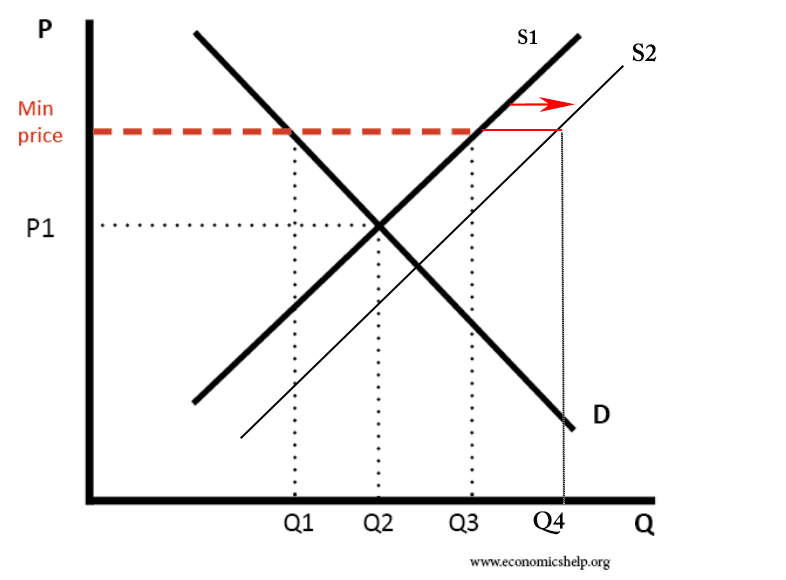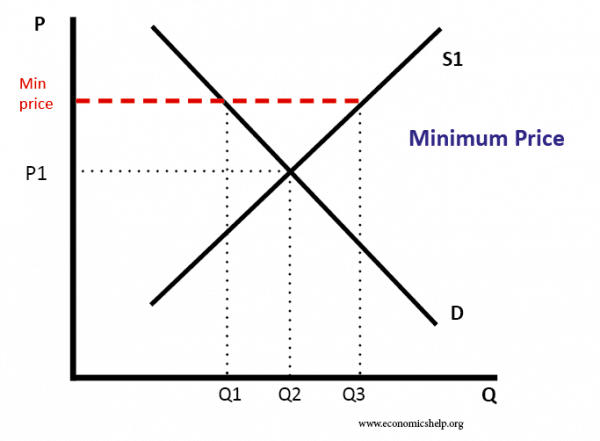The Common Agricultural Policy (CAP) is a European policy which involved:
- Setting minimum prices for many agricultural products
- Setting import tariffs to protect from cheap imports
- EU purchases of surplus food to maintain minimum prices
Since 2005, farmers have been subsidised through Single Farm payments (SFP) and rural development funds
The impact of minimum prices in agriculture was to encourage significant over-supply
The main problems of the CAP are:
1. Cost
Higher prices encouraged extra supply, this resulted in a surplus of food. The EU had to buy this surplus. This is very inefficient and expensive. Although minimum prices have been mostly removed, the EU still give subsidies to farmers.
- In 1970, the CAP accounted for 87% of the EU.
- In 1995 Agriculture cost 40 billion Euros or 58% of the budget.
- In 2013 the budget for direct farm payments (subsidies) and rural development – the twin “pillars” of the CAP – is 57.5bn euros (£49bn), out of a total EU budget of 132.8bn euros (that is 43% of the total). (BBC)
- The CAP budget for the period 2014-2020 will be €278bn (£200.2bn), with the UK receiving €27.7bn (£20bn) over the course of the seven-year period.
2. High Prices
To increase incomes of farmers, consumers have to pay higher prices for food. This is allocatively inefficient and also increase inequality because low-income groups pay a higher % of their income on food
3. Farmers in other countries face lower incomes.
- Firstly the excess food supplies are dumped onto world markets. This caused prices to fall and lower revenues. Farmers in developing economies cannot compete with the subsidised European farmer.
- Secondly, the EU bought fewer imports because of the variable import levy’s Therefore demand from Europe fell
The combined effect was to reduce farmers welfare in both the US and the developing world.
4. Trade Negotiations
The CAP has been a major stumbling block during trade negotiations between the EU and the rest of the world. The US has retaliated against EU exports in response to the high degree of protection given to agriculture.
5. Environmental Problems
The incentives of the CAP encouraged farmers to increase output with the use of artificial fertilizers and pesticides causing problems for the environment. To some extent reforms of CAP are trying to deal with this, giving subsidies for greener use of farmland. But, big agri-business still get large lump sums.
Minimum prices encourage extra supply

The guaranteed minimum prices change incentives in the long-term. With guaranteed high price, farmers are encouraged to expand production, this leads to bigger gluts of supply than originally intended.
6. Inefficiency
Subsidizing farmers through higher product prices is an inefficient method because it penalises the consumer with higher prices. Also, it means large farmers will benefit the most. They have received more than they need but small farmers are still struggling e.g. hill farmers with a low number of sheep
Minimum prices remove the disciplines of the market and encourage inefficiency
Despite these problems, it has proved difficult to reform CAP because of political pressures.
Related


well detailed